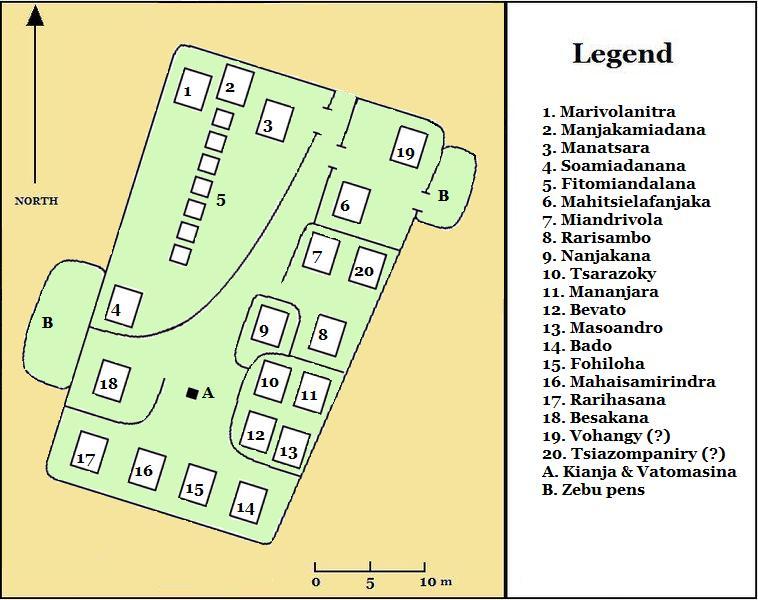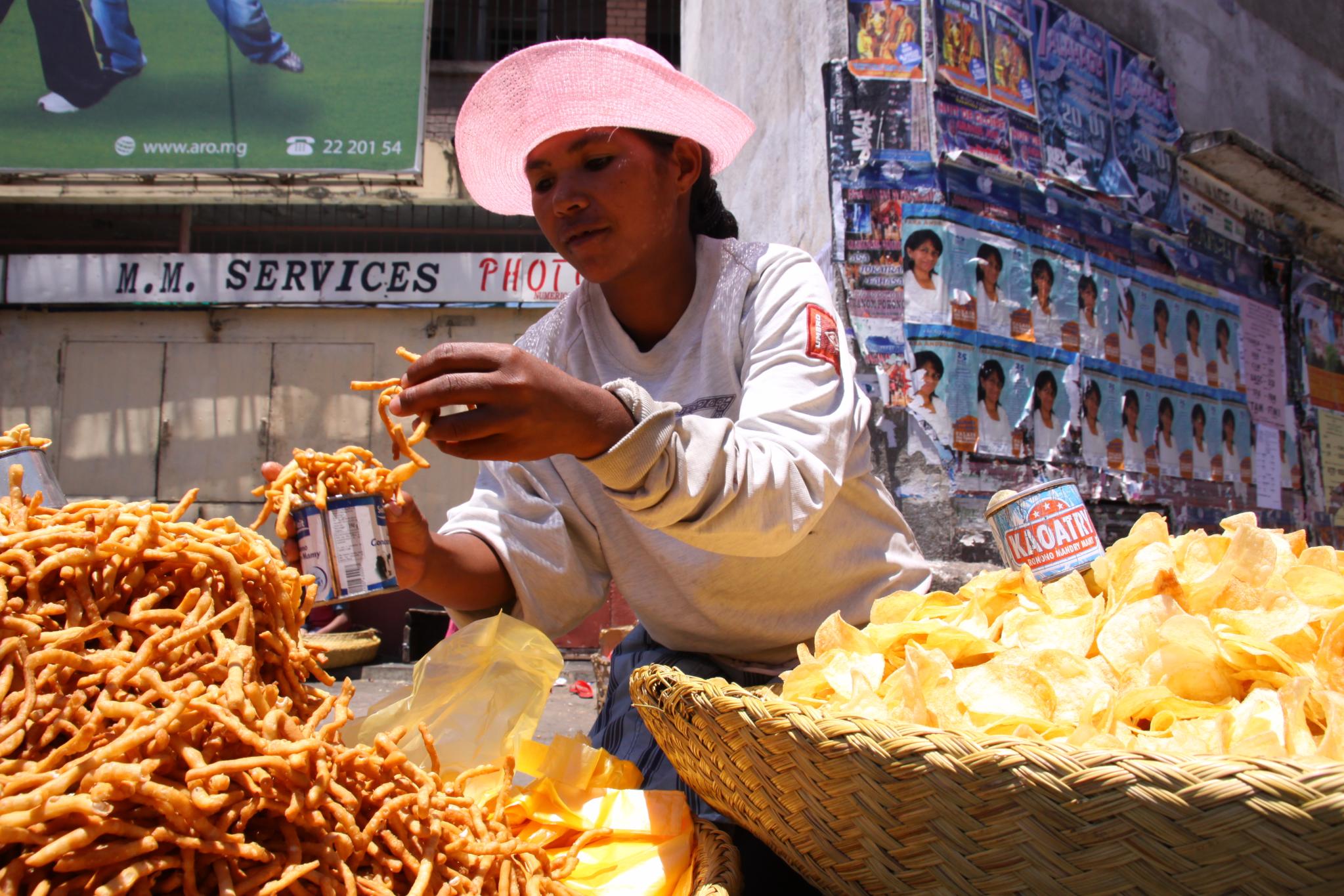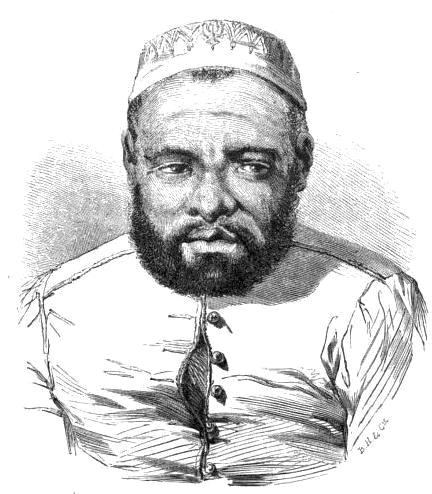|
Sihanaka
The Sihanaka are a Malagasy ethnic group concentrated around Lake Alaotra and the town of Ambatondrazaka in central northeastern Madagascar. Their name means the "people of the swamps" in reference to the marshlands around Lake Alaotra that they inhabit. While rice has long been the principal crop of the region, by the 17th century, the Sihanaka had also become wealthy traders in slaves and other goods, capitalizing on their position on the main trade route between the capital of the neighboring Kingdom of Imerina at Antananarivo and the eastern port of Toamasina. At the turn of the 19th century they came under the control of the Boina Kingdom before submitting to Imerina, which went on to rule over the majority of Madagascar. Today the Sihanaka practice intensive agriculture and rice yields are higher in this region than elsewhere, placing strain on the many unique plant and animal species that depend on the Lake Alaotra ecosystem for survival. The Sihanaka have a generally e ... [...More Info...] [...Related Items...] OR: [Wikipedia] [Google] [Baidu] |
Madagascar
Madagascar, officially the Republic of Madagascar, is an island country that includes the island of Madagascar and numerous smaller peripheral islands. Lying off the southeastern coast of Africa, it is the world's List of islands by area, fourth largest island, the List of island countries, second-largest island country, and the List of countries and dependencies by area, 46th largest country overall. Its capital and List of cities in Madagascar, largest city is Antananarivo. Following the prehistoric breakup of the supercontinent Gondwana, Madagascar split from Africa during the Early Jurassic period, around 180 million years ago, and separated from the Indian subcontinent approximately 90 million years ago. This isolation allowed native plants and animals to evolve in relative seclusion; as a result, Madagascar is a biodiversity hotspot and one of the world's 17 megadiverse countries, with over 90% of its wildlife of Madagascar, wildlife being endemic. The island has ... [...More Info...] [...Related Items...] OR: [Wikipedia] [Google] [Baidu] |
Andrianampoinimerina
Andrianampoinimerina () (c. 1745–1810) ruled the Kingdom of Imerina on Madagascar from 1787 until his death. His reign was marked by the reunification of Imerina following 77 years of civil war, and the subsequent expansion of his kingdom into neighboring territories, thereby initiating the unification of Madagascar under Merina rule. Andrianampoinimerina is a cultural hero and holds near mythic status among the Merina people, and is considered one of the greatest military and political leaders in the history of Madagascar. Andrianampoinimerina (whose name means "the king in the heart of Imerina") took power upon deposing his uncle, King Andrianjafy, who had ruled over Imerina Avaradrano (Northern Imerina). Prior to Andrianampoinimerina's reign, Imerina Avaradrano had been locked in conflict with the three other neighboring provinces of the former kingdom of Imerina that had last been unified under King Andriamasinavalona a century before. Andrianampoinimerina established ... [...More Info...] [...Related Items...] OR: [Wikipedia] [Google] [Baidu] |
Rova Of Antananarivo
The Rova of Antananarivo ( ) is a royal palace complex ('' rova'') in Madagascar that served as the home of the sovereigns of the Kingdom of Imerina in the 17th and 18th centuries, as well as of the rulers of the Kingdom of Madagascar in the 19th century. Its counterpart is the nearby fortified village of Ambohimanga, which served as the spiritual seat of the kingdom in contrast to the political significance of the Rova in the capital. Located in the central highland city of Antananarivo, the Rova occupies the highest point on Analamanga, formerly the highest of Antananarivo's many hills. Merina king Andrianjaka, who ruled Imerina from around 1610 until 1630, is believed to have captured Analamanga from a Vazimba king around 1610 or 1625 and erected the site's first fortified royal structure. Successive Merina kings continued to rule from the site until the fall of the monarchy in 1896, frequently restoring, modifying or adding royal structures within the compound to suit their n ... [...More Info...] [...Related Items...] OR: [Wikipedia] [Google] [Baidu] |
Malagasy People
The Malagasy ( or ) are a group of Austronesian-speaking ethnic groups indigenous to the island country of Madagascar, formed through generations of interaction between Austronesians originally from southern Borneo and Bantus from Southeast Africa. Traditionally, the population have been divided into sub-ethnic groups. Examples include "Highlander" (ethnically mixed ancestry but more Austronesian and slightly less Bantu) ethnic groups such as the Merina and Betsileo of the central highlands around Antananarivo, Alaotra ''(Ambatondrazaka)'' and Fianarantsoa, and the "coastal dwellers" (predominantly Bantu with less Austronesian traits sometimes like mulatto) such as the Sakalava, Bara, Vezo, Betsimisaraka, Mahafaly, etc. The Merina are further divided into two subgroups. The “Merina A” are the Hova and Andriana, and have an average of 34% African ancestry (20% of which is Bantu and Yoruba). The second subgroup is the “Merina B”, the Andevo, who have an average ... [...More Info...] [...Related Items...] OR: [Wikipedia] [Google] [Baidu] |
Austronesian Peoples
The Austronesian people, sometimes referred to as Austronesian-speaking peoples, are a large group of peoples who have settled in Taiwan, maritime Southeast Asia, parts of mainland Southeast Asia, Micronesia, coastal New Guinea, Island Melanesia, Polynesia, and Madagascar that speak Austronesian languages. They also include indigenous ethnic minorities in Vietnam, Cambodia, Myanmar, Thailand, Hainan, the Comoros, and the Torres Strait Islands. The nations and territories predominantly populated by Austronesian-speaking peoples are sometimes known collectively as Austronesia. The group originated from a prehistoric seaborne migration, known as the Austronesian expansion, from Taiwan, circa 3000 to 1500 BCE. Austronesians reached the Batanes Islands in the northernmost Philippines by around 2200 BCE. They used sails some time before 2000 BCE. In conjunction with their use of other maritime technologies (notably catamarans, outrigger boats, lashed-lug boats, and the crab ... [...More Info...] [...Related Items...] OR: [Wikipedia] [Google] [Baidu] |
Merina People
The Merina people (also known as the Imerina, Antimerina, Borizany or Ambaniandro) formerly called Amboalambo are the largest ethnic group in Madagascar.Merina people Ethnic Groups of Madagascar Encyclopædia Britannica They are the "highlander" Malagasy ethnic group of the African island and one of the country's eighteen official ethnic groups. Their origins are mixed, predominantly with [...More Info...] [...Related Items...] OR: [Wikipedia] [Google] [Baidu] |
Malagasy Language
Malagasy ( ; ; Sorabe: ) is an Austronesian languages, Austronesian language and dialect continuum spoken in Madagascar. The standard variety, called Official Malagasy, is one of the official languages of Madagascar, alongside French language, French. Malagasy is the westernmost Austronesian language, brought to Madagascar with the settlement of Austronesian peoples, Austronesian speakers from the Sunda Islands (about 7,300 kilometres or 4,500 miles away) around the 5th century AD or perhaps between the 7th and 13th centuries. The Malagasy language is one of the Barito languages and is most closely related to the Maʼanyan language, still spoken on Borneo. Malagasy also includes numerous Malay language, Malay loanwords, from the time of the early Austronesian settlement and trading between Madagascar and the Sunda Islands. After , Malagasy incorporated numerous Bantu languages, Bantu and Arabic language, Arabic loanwords brought over by traders and new settlers. Malagasy is spok ... [...More Info...] [...Related Items...] OR: [Wikipedia] [Google] [Baidu] |
Zebu
The zebu (; ''Bos indicus''), also known as indicine cattle and humped cattle, is a species or subspecies of Bos taurus, domestic cattle originating in South Asia. Zebu, like many Sanga cattle breeds, differs from taurine cattle by a fatty hump on their shoulders, a large dewlap, and sometimes drooping ears. They are well adapted to withstanding Tropical climate, high temperatures and are farmed throughout the tropics. The zebu is used as a draught animal, draught and riding animal, dairy cattle and beef cattle, as well as for byproducts such as Hide (skin), hides and Feces, dung for fuel and manure. Some small breeds such as Nadudana also known as the Miniature Zebu, miniature zebu are also kept as pets. In some regions, zebu have significant Cattle in religion#In Indian religions, religious meaning. Taxonomy Both scientific names ''Bos taurus'' and ''Bos indicus'' were introduced by Carl Linnaeus in 1758, with the latter used for humped cattle in China proper, China. The ze ... [...More Info...] [...Related Items...] OR: [Wikipedia] [Google] [Baidu] |
Sakalava People
The Sakalava are an ethnic group of Madagascar. They are primarily found on the western edge of Madagascar from Toliara in the south to the Sambirano River in the north. The Sakalava constitute about 6.2 percent of the total population, or about 2,079,000 in 2018. Their name means "people of the long valleys." Ethnic identity The Sakalava are a number of smaller ethnic groups that once comprised an empire, rather than an ethnic group in its own right. The origin of the word ''Sakalava'' itself is still subject to controversy, as well as its actual meaning. The most common explanation is the modern Malagasy translation of Sakalava meaning long ravines, denoting the relatively flat nature of the land in western Madagascar. Another theory is that the word is possibly from the Arabic ''saqaliba'', which is in turn derived from Late Latin ''sclavus'', meaning slave. History Sakalavas are considered to be a mix of Austronesian and Bantu peoples. Austronesian peoples from various ... [...More Info...] [...Related Items...] OR: [Wikipedia] [Google] [Baidu] |
French Madagascar
The Colony of Madagascar and Dependencies () was a French colony off the coast of Southeast Africa between 1897 and 1958 in what is now Madagascar. The colony was formerly a protectorate of France known as Malagasy Protectorate. The protectorate became a colony, following Queen Ranavalona III's exile to Réunion. In 1958, the colonial administration in Madagascar was abolished, and it became an autonomous territory of the French Community as the Malagasy Republic, which existed until 1975. History Background and French protectorate The United Kingdom had been an ally of Madagascar. In May 1862, John Russell, 1st Earl Russell, Britain's foreign secretary, instructed Connolly Pakenham that Radama II should keep the country away from foreign powers. In 1882, the French started to occupy much of Madagascar's northern and western territories. In 1883, the Franco-Hova Wars commenced between France and Merina Kingdom, but the outcome remained inconclusive. The British gov ... [...More Info...] [...Related Items...] OR: [Wikipedia] [Google] [Baidu] |
Menalamba Rebellion
The ''Menalamba'' rebellion was an uprising in Madagascar by the Merina people that emerged in central Merina Kingdom, Madagascar in response to the French colonial empire, French capture of the Rova of Antananarivo, royal palace in the capital city of Antananarivo in September 1895. It spread rapidly in 1896, threatening the capital, but French forces were successful in securing the surrender of many rebel groups in 1897. Elements of the rebellion continued sporadically until 1903. Menalamba rebels were mostly outlaws called "Fahavalo" led by Rabozaka and Rabezavana in the region of Anjozorobe between Alaotra lake and Betsiboka river and Rainibetsimisaraka in the region of Vakinankaratra. Background French diplomatic and military claims over the island of Madagascar – ongoing for more than four decades – intensified under the reigns of Queen Ranavalona II and Queen Ranavalona III, the island's final monarchs.Oliver, Samuel. ''Madagascar: An Historical and Descriptive Account ... [...More Info...] [...Related Items...] OR: [Wikipedia] [Google] [Baidu] |







